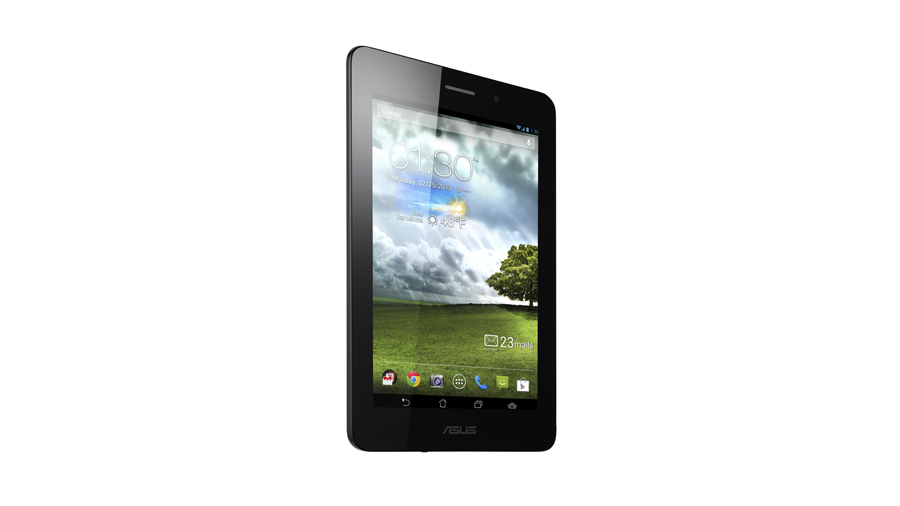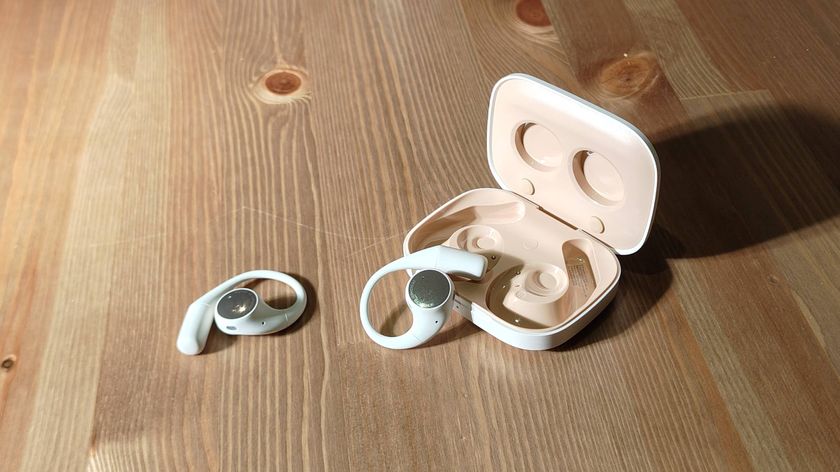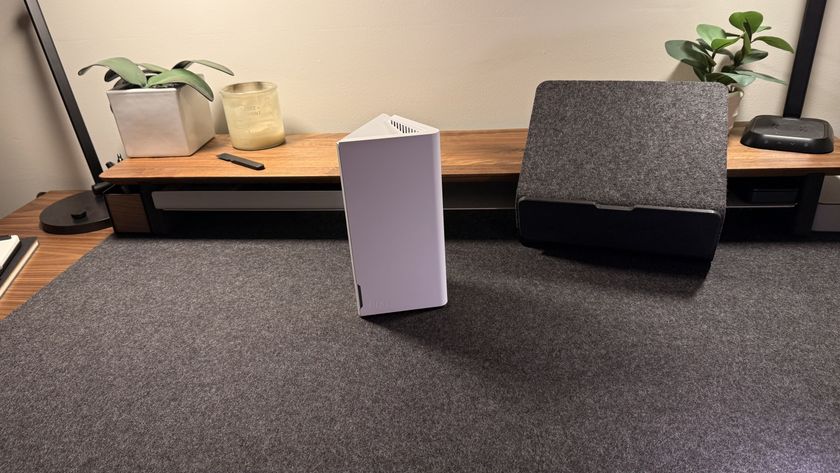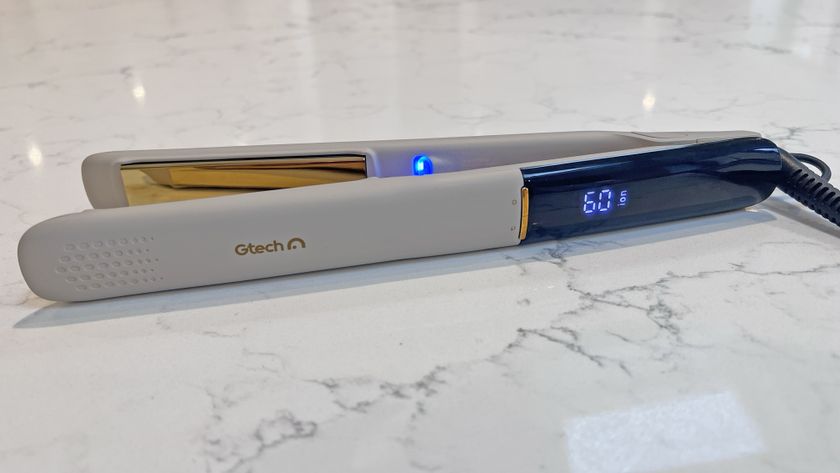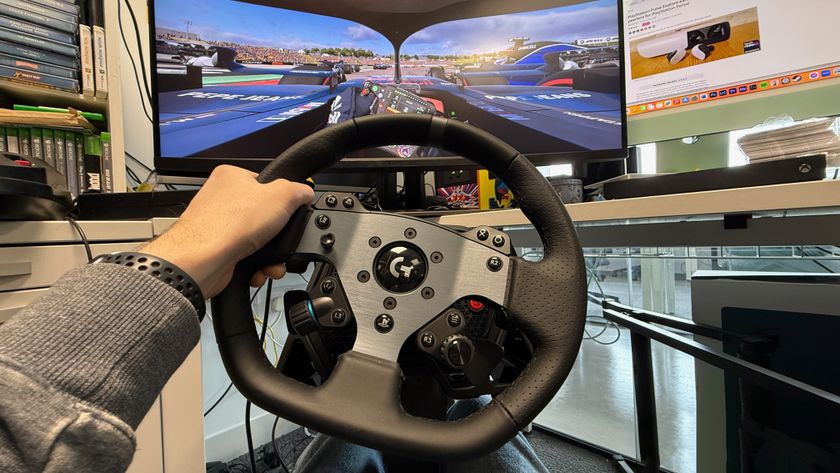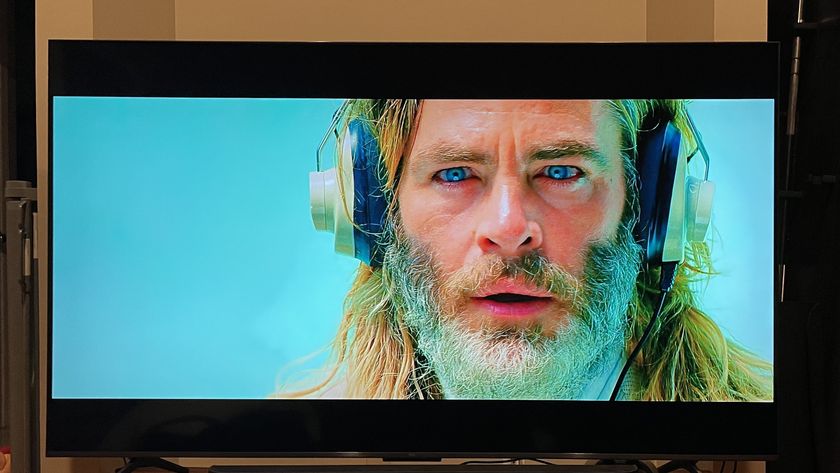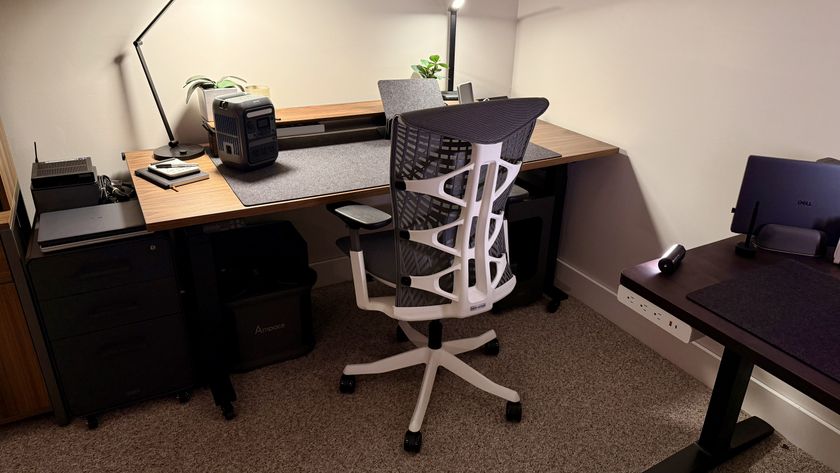TechRadar Verdict
As a smartphone, its use is negligible. But as a tablet, the Asus FonePad shines just as brightly as its Google-branded cousin, and while the small-tablet market is crowded the FonePad stands out. It's well made and offers a good selection of features for a good price.
Pros
- +
Great LED-backlit screen
- +
microSD storage
- +
Premium metal chassis
- +
Good battery life
Cons
- -
No rear camera
- -
Poor speakers
- -
Nexus 7 cheaper
- -
Impractical for calls
Why you can trust TechRadar
The latest creation rolling off the production line at Asus is the Asus FonePad: a 7-inch Android tablet that can make and receive phone calls.
Arriving with an extremely friendly £179.99 price tag when it launches on April 26, the FonePad is here to compete with the likes of the Google Nexus 7 (also developed by Asus), the Kindle Fire HD and the all-conquering iPad mini for your affections.
Interestingly, the Asus FonePad is notable for coming armed with an Intel processor rather than the Nvidia Tegra chips favoured by the majority of Android devices. The Intel Atom Z2420 on board clocks in at a speed of 1.2GHz and has a separate PowerVR SGX540 GPU for backup.
There's 16GB of storage space as well as the unbridled benefit of Android Jelly Bean arriving out of the box. But it's the smartphone aspect of the device that Asus is hoping will entice you.
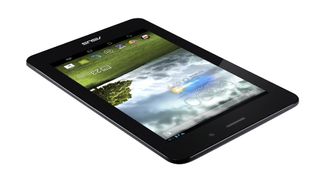
The Taiwanese company believes the device is "ideal for people who value both the voice communication features of a smartphone and the entertainment opportunities afforded by a tablet".
It's not exactly wrong either. Once the 3.5-inch display of the iPhone 4S was considered sufficient, but the sales of devices like the Samsung Galaxy Note 2 and the recently revealed Samsung Galaxy Mega suggests we're getting happy with bigger screens.
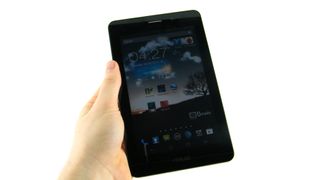
That doesn't necessarily mean you're happy to walk around with a 7-inch slate clasped to your ear - but that's missing the point of the FonePad. You can use a headset when walking down the street, or prop it on a stand at your desk and use the speakerphone.
It's an attempt to answer the age-old dilemma of one general device or multiple specific devices.
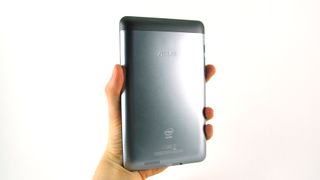
We're going to go out on a limb and suggest the FonePad probably won't replace the Samsung Galaxy S4, iPhone 5, Sony Xperia Z or HTC One you carry in your pocket every day.
But Asus has tucked plenty of tech into the device and kept the price low enough that it certainly stands as a respectable tablet in its own right.
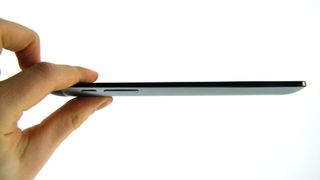
When tablets first started arriving back in 2010, it was the lesser known manufacturers that turned in cheaper options - usually by cutting every conceivable corner when it came to features and design. Now though, the big boys of the tech world have become very good at keeping those aspects alive at wallet-friendly prices.
The Asus FonePad features the accepted 7-inch screen and, from the front at least, looks the conventional Android tablet.
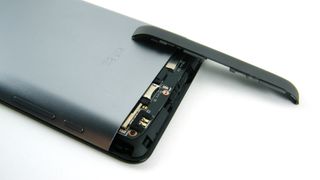
Jelly Bean's soft-touch navigation keys mean the face of the FonePad is devoid of physical buttons, leaving simply the black bezel with the Asus logo and camera lens on the top.
The rear of the tablet has more in common with Apple's iPad mini than the Asus-produced Google Nexus 7 thanks to a smooth metallic finish. Available in either "titanium grey" or "champaign gold", the metal adds an undeniably premium feel even if the grip isn't as good as the dimpled rear surface of the Nexus 7.
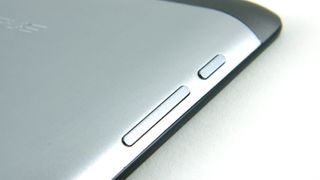
Asus has located the power button and the volume rocker on the left edge near the top of the tablet. The edge of the device is tapered and the buttons are set fairly close to the chassis, so hitting them in a hurry isn't always easy. Similarly, given the smoothness of the back, it can be a bit tricky adjusting volume with your thumb if you're holding the tablet one-handed with your left mitt.
The FonePad's 16:9 aspect ratio means its easy to grip around the back for anyone with small or medium sized hands. You'll be able to curl your fingers around the edge and hold it comfortably, rather than having to resort to holding it by one corner and obscuring part of the screen.
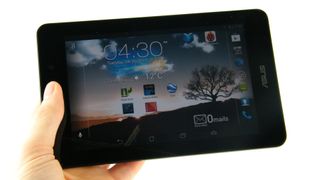
Naturally though, the tablet works best when gripped with both hands in a landscape mode. If you're gaming or watching the latest Game of Thrones, chances are you'll be holding it this way and the FonePad sits very nicely in a two-handed grip.
We mentioned that tablet manufacturers cut corners in the early days and some of that still survives - cost is cost, after all. The FonePad doesn't feature a rear-facing camera, so the back of the chassis is completely clean. By way of markings, you'll find an embossed Asus logo and the familiar Intel Inside mark at the bottom of the tablet.
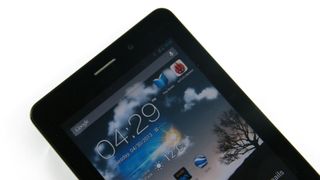
If there's one thing as bad as holding a tablet up to make a phone call, it's holding a tablet up to take a picture. We feel fairly safe in saying here that the omission of a rear-facing camera is no great loss. If you're absolutely desperate for one, pick up the US version of the FonePad - that's got a 3MP rear-facing camera built in.
The only two ports on the device are the micro USB port and the 3.5mm headphone jack. These are both found on the bottom of the tablet with the headphone jack to the left of the charging port.
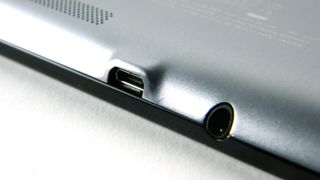
Weighing in at 340g, the FonePad is slightly heavier than Apple's 308g iPad mini - but in day-to-day terms this slight extra bulk is barely noticeable. Part of the attraction of 7-inch tablets is undeniably the lighter load and you'll have no trouble holding this tablet one-handed while watching videos, or indeed, making a call.
If Asus does want to best Apple's effort, it can point to screen resolution as one way of doing that. The 1,280 x 800 resolution panel on the FonePad display benefits from an LED backlight with IPS technology and is exceptionally clear.
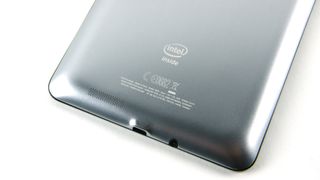
It won't usurp the 10-inch tablets for screen clarity but the contrast ratio and colour balance certainly looked all right to us and is more than serviceable for enjoying a movie or game on the move.
Unfortunately, the problem with premium metallic finishes and beautiful TFT-coated screens is the susceptibility to dust and scratches. It's no different here and the FonePad is certain to come off worse against keys and loose change if you leave it unprotected in your backpack. Our advice? Invest in a case.
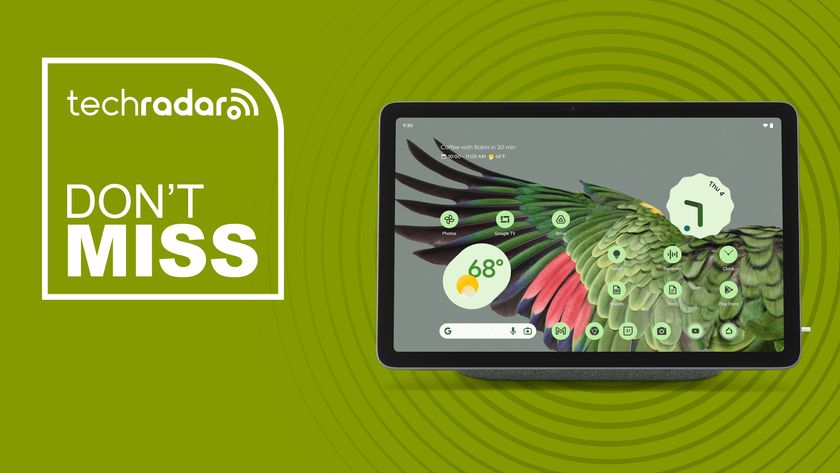
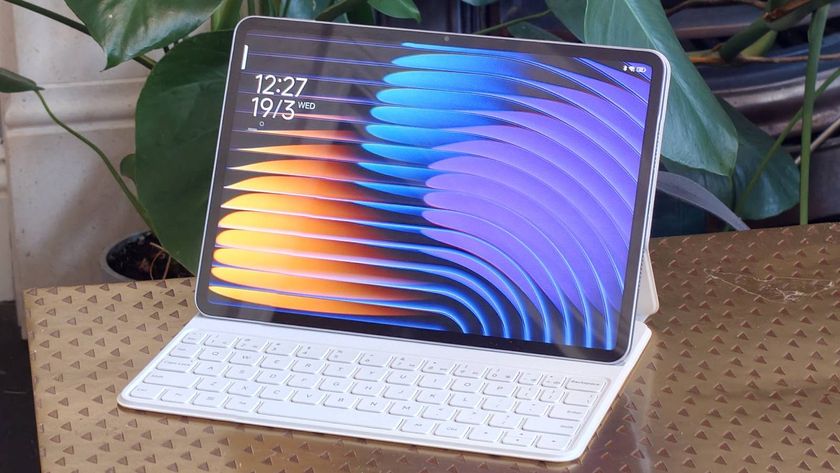
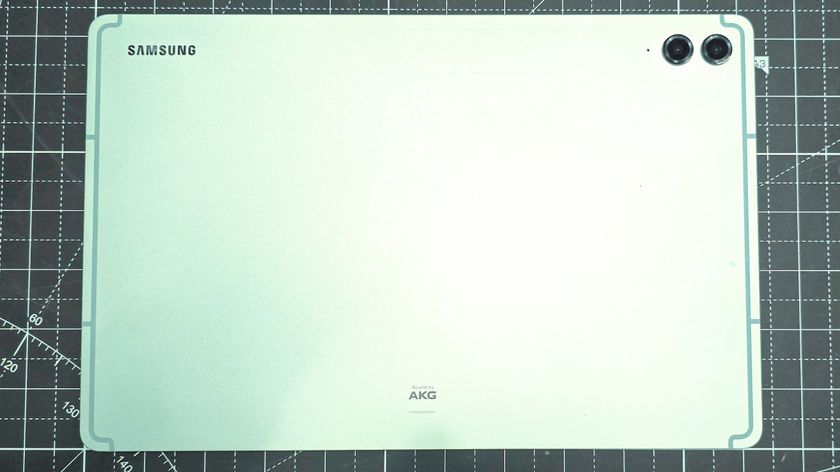
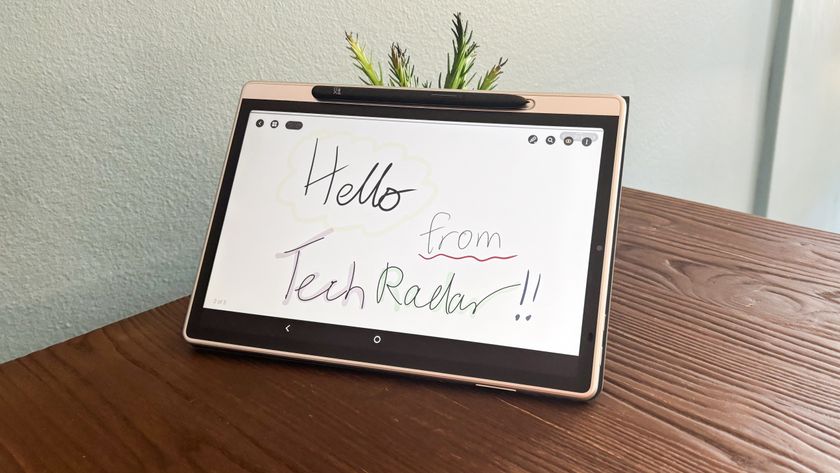

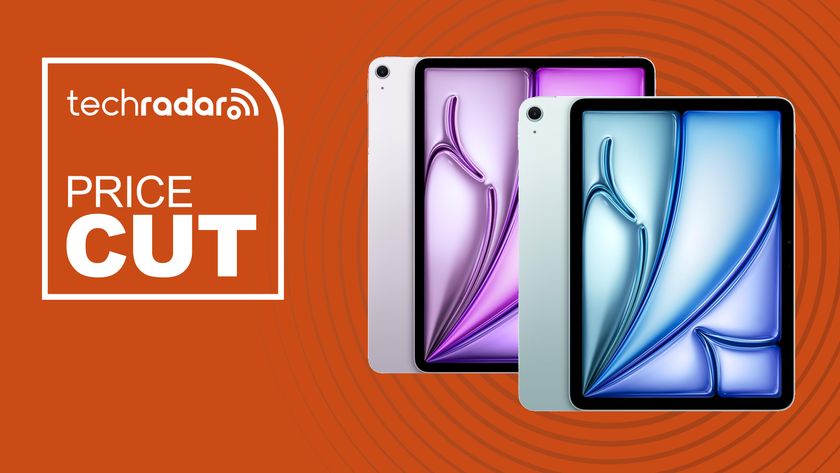

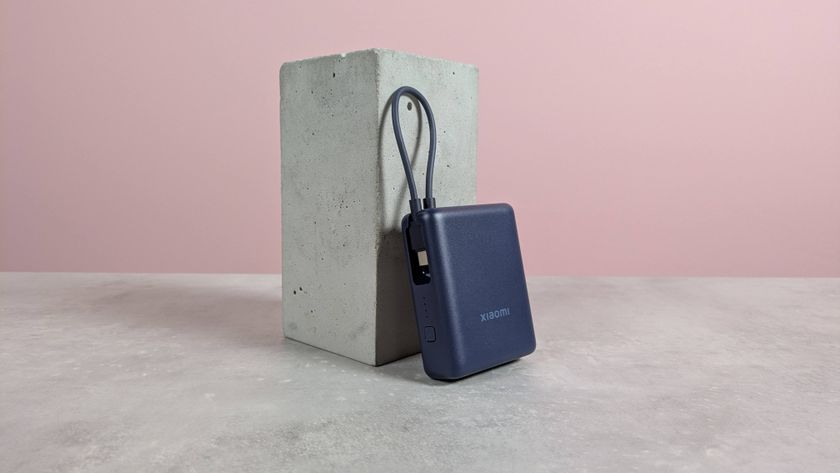
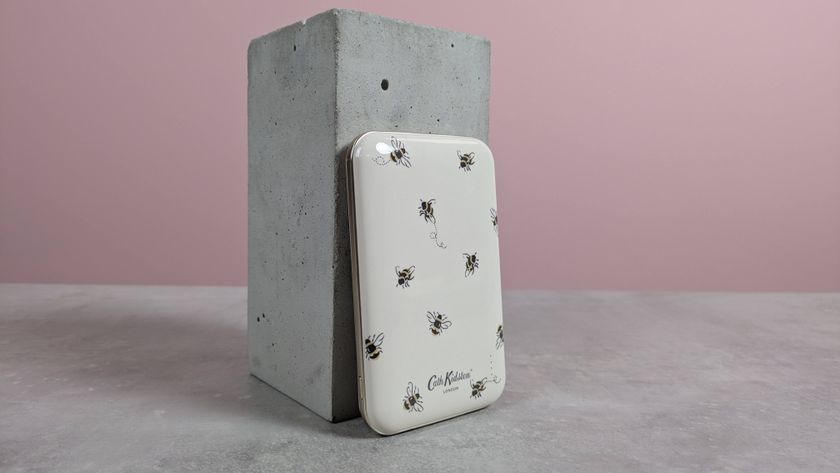


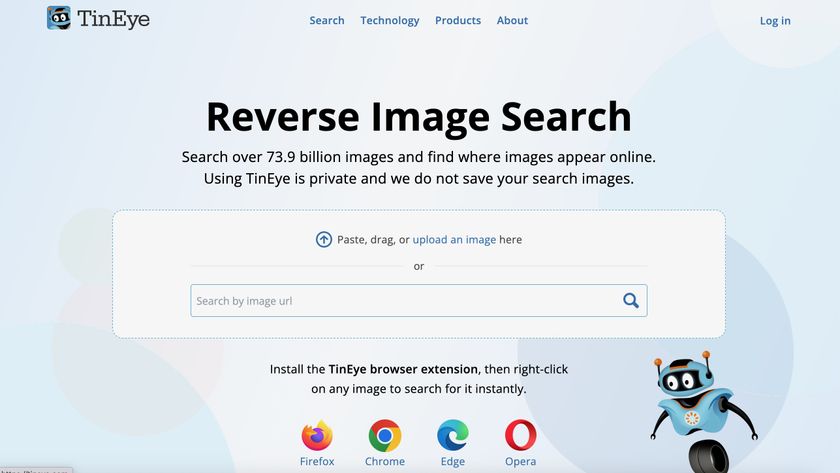
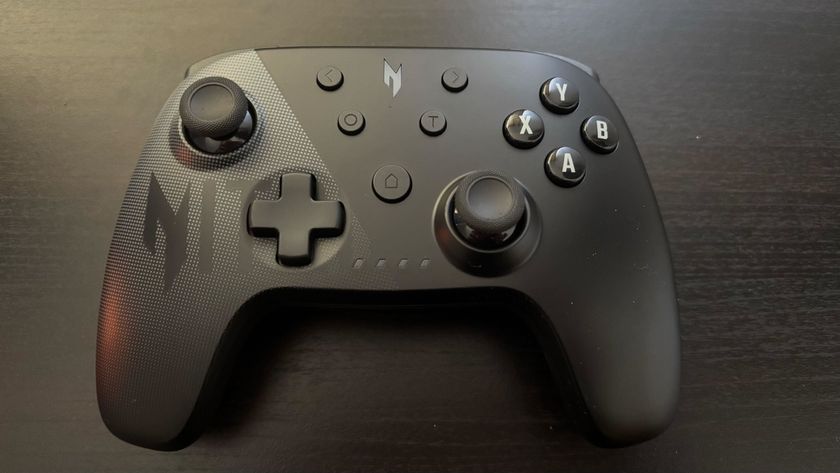
The Acer Nitro NGR300 is hard to recommend today thanks to its reliance on AA batteries and complete lack of console compatibility
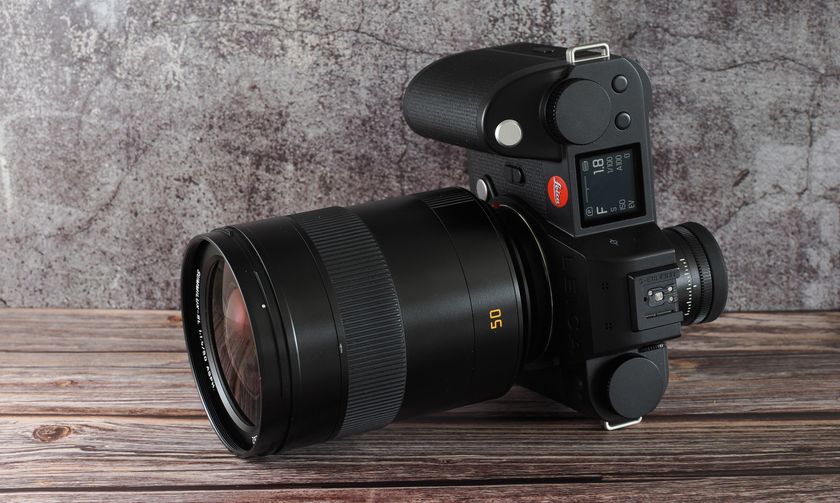
I tested the pricey full-frame Leica SL3-S, and I've never seen 24MP images look so good
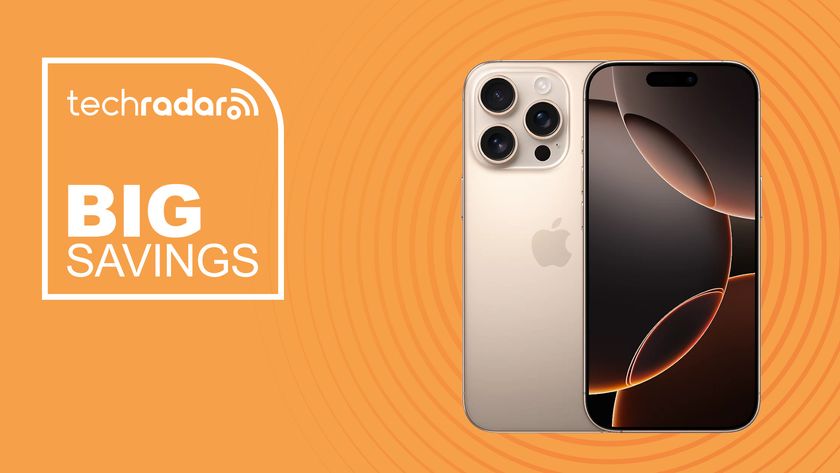
You can get a free iPhone 16 Pro Max without a trade at Verizon right now - with one minor catch
